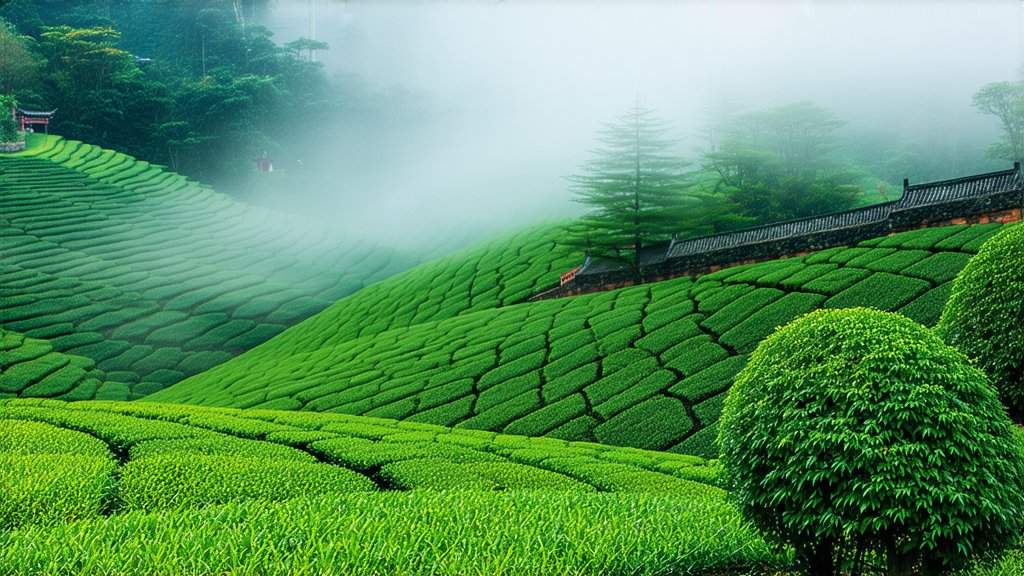
In the heart of China's Fujian Province lies a gem that has captivated tea enthusiasts for centuries—Tieguanyin, a variety of oolong tea renowned for its intricate flavors and aromatic profile. This article delves into the rich history, diverse varieties, meticulous production process, and the art of appreciating Tieguanyin, offering an insightful journey into one of China's most cherished tea heritage.
Historical Roots and Cultural Significance
The tale of Tieguanyin begins in the Ming Dynasty (1368-1644), though its popularity surged during the Qing Dynasty when it became a favored beverage among the imperial court. Legend has it that the tea was discovered by a poor scholar named Wei Yin who found a mysterious tea plant on a mountainside. After consuming its leaves, he passed the imperial examinations with flying colors, attributing his success to the divine tea. Thus, 'Tieguanyin,' meaning 'Iron Goddess of Mercy,' was born, symbolizing both its miraculous properties and the compassionate spirit of its discoverer.
Varietals and Flavor Profiles
Tieguanyin is not just a single tea but a family of teas, each with distinct characteristics shaped by factors such as terroir, cultivation practices, and processing techniques. The two main types are Anxi Tieguanyin and Huangjin Guifei (Golden Osmanthus). Anxi Tieguanyin, the original and most celebrated, is known for its floral aroma, creamy texture, and sweet aftertaste. It embodies a balance between green and black teas, offering a complex flavor profile that can range from orchid and magnolia to roasted nuts and caramelized sugar.
Huangjin Guifei, a variant infused with the fragrance of osmanthus flowers, adds another layer of sophistication to Tieguanyin's repertoire. This blend marries the tea's natural flavors with the delicate scent of osmanthus, creating a symphony of aromas that dance on the palate and linger long after the sip.
The Craft of Tieguanyin Production
The creation of Tieguanyin is an art form that requires precision, patience, and a deep understanding of nature. The journey starts with careful selection of the tea bushes, typically grown in the rocky terrain of Anxi's Wuyi Mountains. These high-altitude gardens provide ideal conditions for cultivating tea with unique mineral content, contributing to its distinctive taste.
Harvesting occurs multiple times a year, with spring being the prime season for premium leaves. The freshly picked leaves undergo a series of steps: withering under the sun to reduce moisture content, bruising to release enzymes and initiate oxidation, and then shaping through rolling to form tight pellets characteristic of oolong tea. Following this, the leaves are partially oxidized, a process that strikes a delicate balance between green and black tea characteristics. Finally, they are fired in woks or roasters to halt oxidation and develop their signature flavors.
The Tea Ceremony: Appreciating Tieguanyin
To truly appreciate Tieguanyin, one must engage in the traditional Chinese tea ceremony, which elevates tea drinking from a mere act of consumption to an art form and spiritual practice. Begin by selecting a high-quality Yixing clay teapot, known for its ability to enhance the tea's flavors without imparting any additional tastes. Warm the pot with hot water before discarding it to prepare for brewing.
Use about 5 grams of Tieguanyin per 150ml of water, adjusting according to personal preference. The first infusion serves to 'wake up' the leaves, while subsequent infusions reveal deeper layers of flavor. Steep for approximately 20-30 seconds initially, gradually increasing steeping time for each subsequent brew. Observe the tea's color transform from pale gold to a rich amber hue, inhale its evolving aromas, and savor each sip mindfully, allowing the tea to coat your entire mouth before swallowing.
Tieguanyin offers a sensory experience that transcends taste alone; it invites contemplation of relaxation, making every cup a moment of tranquility amidst life's hustle and bustle.
Conclusion
Tieguanyin stands as a testament to China's profound tea culture, embodying centuries of tradition, innovation, and reverence for nature. Its allure lies not only in its exceptional taste but also in the stories and rituals that surround it. As you embark on your own exploration of this remarkable tea, remember that each sip connects you to a legacy that spans generations, inviting you to partake in a timeless tradition of harmony and appreciation.